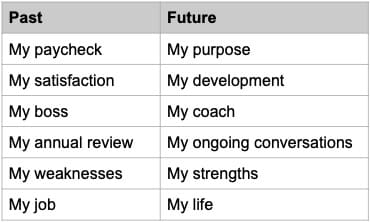
Five Compassionate Accountability® Leadership Behaviors That Attract and Retain Top Talent
Share viaIn a recent meeting with the Vice President of HR and Talent for a multinational company, she shared the struggle they are having trying to engage and retain their best talent. “It’s a puzzle,” she said, “On the one hand, they want flexibility and a personal touch. On the other hand, they want clear expectations, challenges, and a path to advancement.”
What Used To Work Doesn’t Work Anymore
The first challenge is figuring out this apparent contradiction between relationships and results. The second challenge is overcoming old-school leadership attitudes and practices. Gone are the days when leaders could fall back on philosophies like, “You should be thankful to get a paycheck,” or “No news is good news. I’ll let you know if you mess up.”
There’s good news though. The VP I was speaking with continued, “Under the right conditions, our new generation of employees want to work hard and contribute. But how do we crack the code?”
Cracking the Code: Leadership Then and Now
Research on employee engagement and retention reveals that different generations have different wants and needs. One of the best summaries of this literature that I have seen is contained in Mark C. Crowley’s book, Lead from the Heart: Transformational Leadership for the 21st Century. Mark compares the old paradigm with what the new generation wants and needs. This summary is taken from my book, Compassionate Accountability: How Leaders Build Connection and Get Results.

Five Compassionate Accountability Leadership Behaviors That Attract and Retain Top Talent
What’s clear from this list is that the new generation wants compassion AND accountability, no compromises. Compassionate Accountability offers a both-and breakthrough that reconciles the apparent contradiction between relationships and performance. Here are five leadership behaviors that will attract and retain top talent without abandoning what motivates the older generations.
Connect to Purpose
Employees want to know that their work has purpose. As a leader, here are things you can do.
- Know and articulate your organization’s mission, vision, and values.
- Make connections between the purpose of your organization and your employees’ daily activities.
- Ask your employees what matters to them; help them find ways to nurture their passions.
Focus on Strengths
Employees want to focus on their strengths. As a leader, here are things you can do:
- Ask employees what they are good at and what they enjoy.
- Look for opportunities for employees to use their strengths in their jobs.
- Invite employees to suggest ways they can apply their strengths to make a bigger contribution.
Be a Coach
Employees don’t want a boss. They want a coach who cares about them and wants them to be successful. As a leader, here are things you can do to help them learn and grow:
- Separate the person from the behavior. Have candid conversations about behavior, but never undermine your employee’s dignity as a human being. You can show empathy and still talk about performance.
- Affirm their experiences, feelings, and motives without judging.
- Be curious and get to know what matters to them.
- Offer to be a resource but don’t do it for them. Rescuing is the surest way to undermine engagement.
- Clarify deliverables and boundaries in a non-threatening way.
Provide Regular, Helpful Feedback
Annual performance reviews are a thing of the past. Employees want much more frequent feedback. As a leader, here are things you can do:
- Communicate regularly with employees about what you see and what you want.
- Regularly check in with them about how they are doing, not just what they are doing.
- Never withhold information that could help them be more effective. Controlling information is an outdated command and control tactic that erodes trust and initiative.
Invest in Growth And Development
Employees don’t just want to do what they are good at. They also want to improve. Being challenged and mastering new skills is highly rewarding. As a leader, here are things you can do:
- Ask employees to learn new things. Give them opportunities to master a new skill or learn something that will help them be more effective.
- Encourage healthy risk-taking.
- Create a safe space where failure can be an opportunity to learn and grow. Get insights from the expert on intelligent failure in this podcast conversation I had with Amy Edmondson.
These five leadership behaviors all have one thing in common. They simultaneously promote employee value, capability, and responsibility, which are the elements of Compassionate Accountability. Great leadership builds connections WHILE getting results.
Treating employees with Compassionate Accountability is the key to attracting, engaging, and retaining your top talent.
Copyright Next Element Consulting, LLC 2025
Become A Place Where People Want To Work
Book Your Next Keynote Speaker

Author and Co-founder of Next Element, Dr. Nate Regier is available to speak at your upcoming event.
Submit a Speaker RequestListen to Nate on The Compassionate Accountability Podcast
 Listen to the Podcast
Listen to the Podcast

0 Comments
Add comment